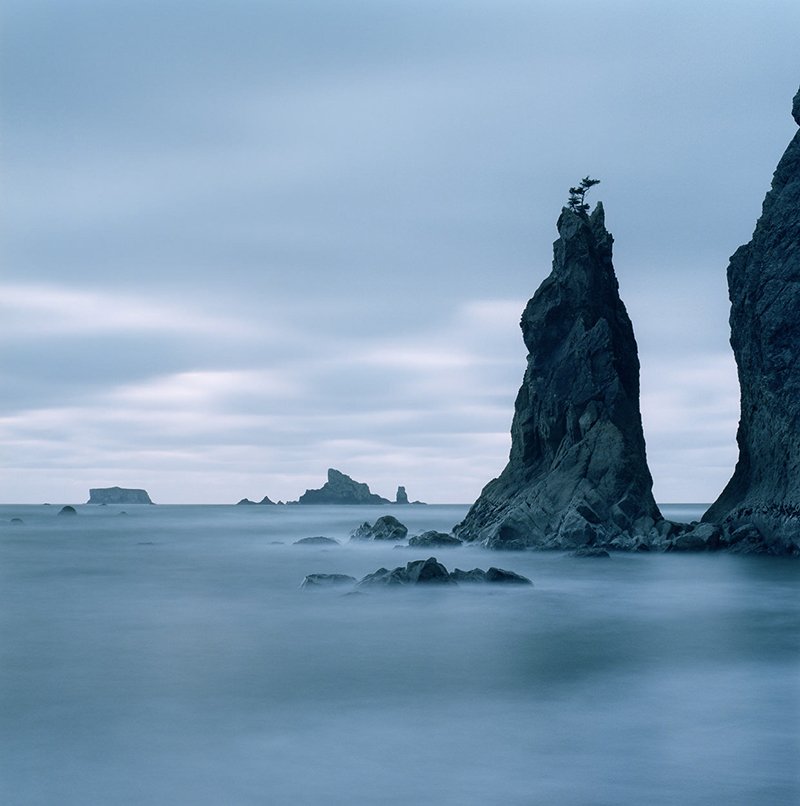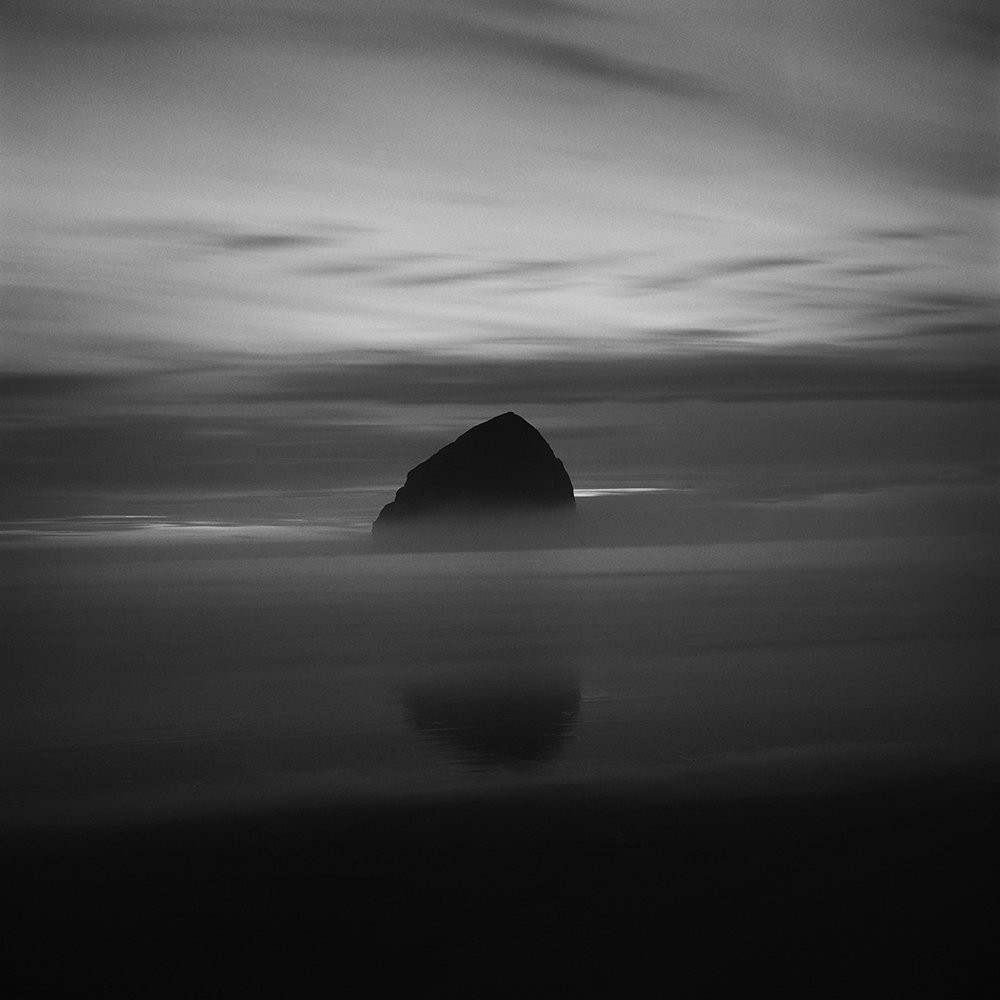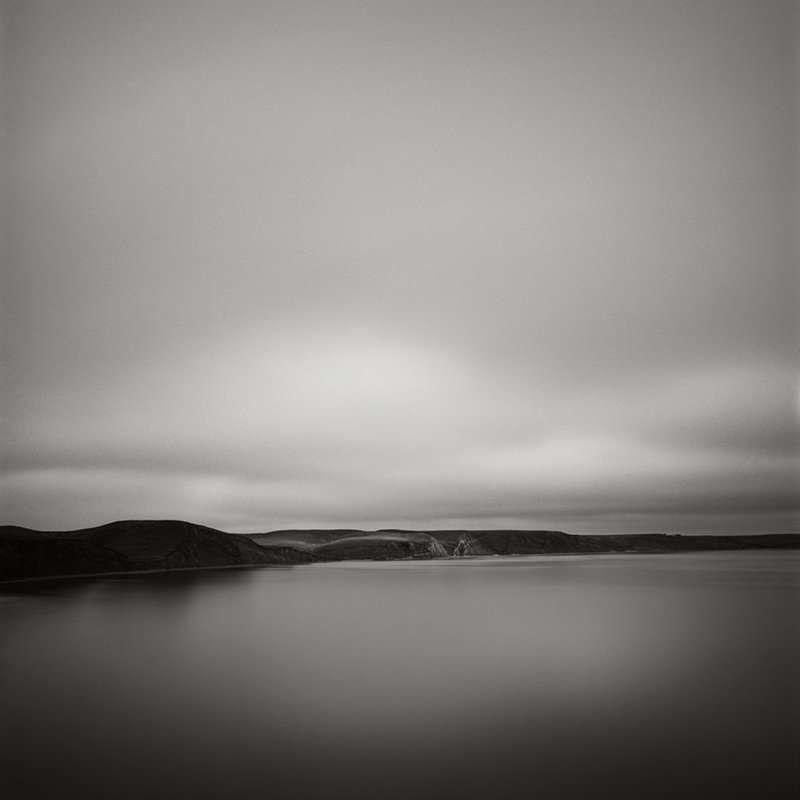Three Acts of a Landscape Photographer
Act I - Revelation
It is 2003.
A sliver of the northern Washington coastline lies within the boundaries of Olympic National Park. It’s rugged and wild. The afternoon was spent photographing inland, wandering a temperate rainforest dripping with moss. As the sun set we checked the angle of the sun against our map and decided the position of Rialto Beach would give us good evening light.
The small parking lot is tucked beneath mature hemlocks. What we seek is a mile up the beach, a collection of sea stack pinnacles, some topped with gardens of trees. We unload gear and start walking. Protection makes this beach a wilderness. Dense forest grows right down to the high tide line. The rocky shore is covered in ocean detritus. It’s easy to time travel, all that’s needed to secure the fantasy is a short face bear lumbering down from treeline to scavenge a rotting whale carcass.
The sun is dipping low. I let it reced past the horizon, past the obvious golden hour and into the after light. It’s the first time I do this. I want mood, not saturation and since I’m using color negative film I realize the color temperature of this after light will render on my film blues, turquoises, maybe even a subtle green. I setup my tripod in front of a huge conical shaped sea mount and fill the frame with it. But I hesitate. It’s wrong. Picking up my tripod I walk left. Coming off this main stack is a second, smaller formation topped with a lone tree. I frame it to the right and leave the left open. And in that moment a beautiful revelation. The revelation of negative space. It is the words not spoken, the hint of something, the metaphor, the poetry. My exposure is long, a few minutes, and in that time the water and clouds flow past and build static movement.
I didn’t know it at the time, and wouldn’t for many years, but this moment is when I became an artist. I transcended the tool for the expression. I was in.
Act II - Beginning
It is 1991.
Two fourteen year old boys are hopping on barnacle encrusted sandstone at the extreme edge of Cape Kiwanda. Their ignorance on full display as large waves of high tide creep closer. In an hour this will be underwater, but at that moment they are obsessed with a lone whale diving for food in the deep waters between the cape and Haystack Rock. Behind them stands a photographer. One of the boys walks over. Why I walked over I don’t remember. I point out the whale, he’s not interested. He’s interested in the sea stack and tells me about his gallery in Portland. It’s my first encounter with a professional landscape photographer. I don’t remember his name but that’s irrelevant. A seed was planted.
I don’t mark this spot as the moment I dedicated my life to this art form. That obsession will come later. I’ve been coming to this coast since I was six and it’s as much wrapped in that nostalgia as it is in anything, but I do find this beginning moment romantic and strange.
Years later, with tens of thousands of hours spent, I’m standing on the shore looking out at the same Haystack Rock. I slept on the sand the previous night, my blanket is tucked in a small cleft along the bluff behind me. The sunrise is breaking but to the west the light is soft and quiet. A morning fog wisps along the surf. The rock rises like a sentinel. One of the old ones, left standing when all its surrounding rock has long since eroded. Ya, I’m not interested in the diving whales either.
Act III - Conversation
The year doesn’t matter, it’s the scene that’s important. Subtly is hard to capture. It can border prosaic, almost boring. But, if exercised with artistic intention, in a way that conveys mystery and expresses story then these understated images can transcend entertainment.
I stand atop a bluff on the far western arm of Point Reyes National Seashore looking along the inside of the peninsula across Drakes Bay. The scene before me is quiet, overcast with low contrast and almost no tonality. The calm is wonderful to experience but not to photograph. Or is it? Landscape photography is a series of thought experiments. I drop my pack and go inside my head.
The scene loses all saturation, black and white. The land brushstrokes across the frame with no foreground, 80mm lens. The water smooths out, the sky softens, long exposure. The hills turn black, zone two. The middle sky brightens, increase development, the long exposure will add contrast. The middle water a rich gray, that’ll fall naturally. The bottom a vignette, burn in later. All I need is the starting value of the bluff, I’ll meter for that. That’s my starting point.
I have no idea how long this conversation with myself lasts. I’ve been told I blank out while staring at such landscapes from those that have come with me. But this time I’m alone and it’s the first time I look on such a scene and see the final result as something far removed from the reality in front of me.



